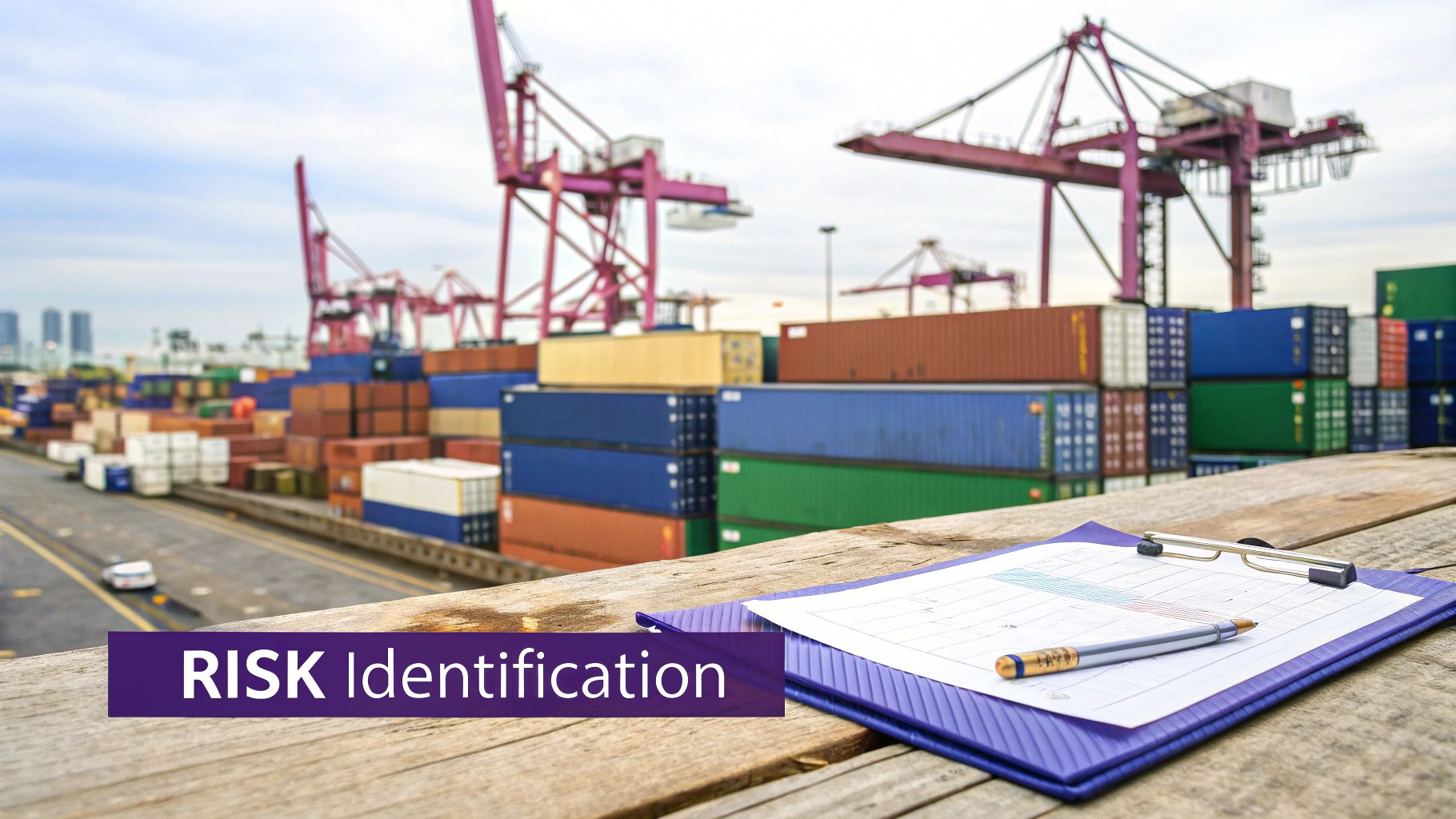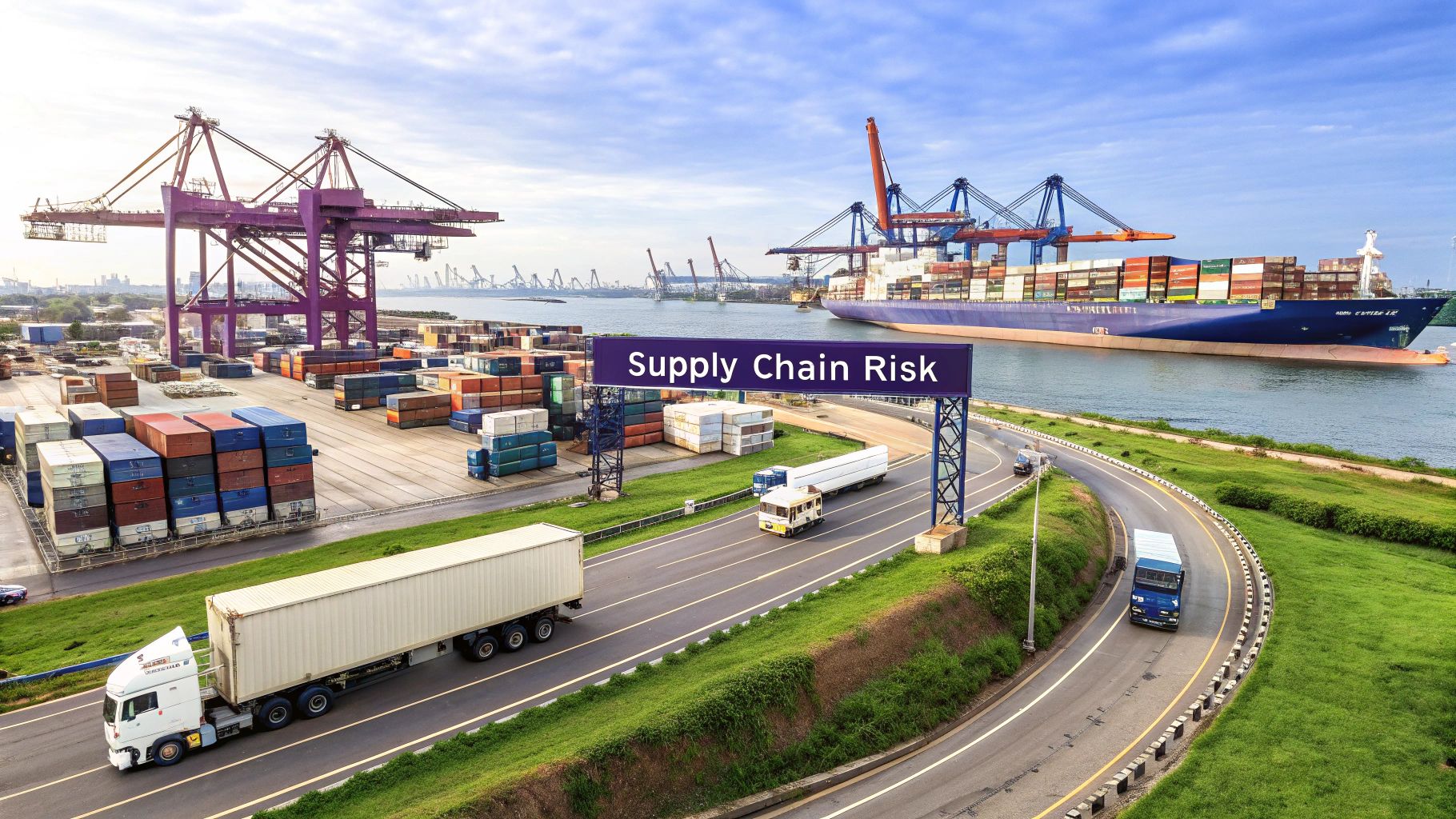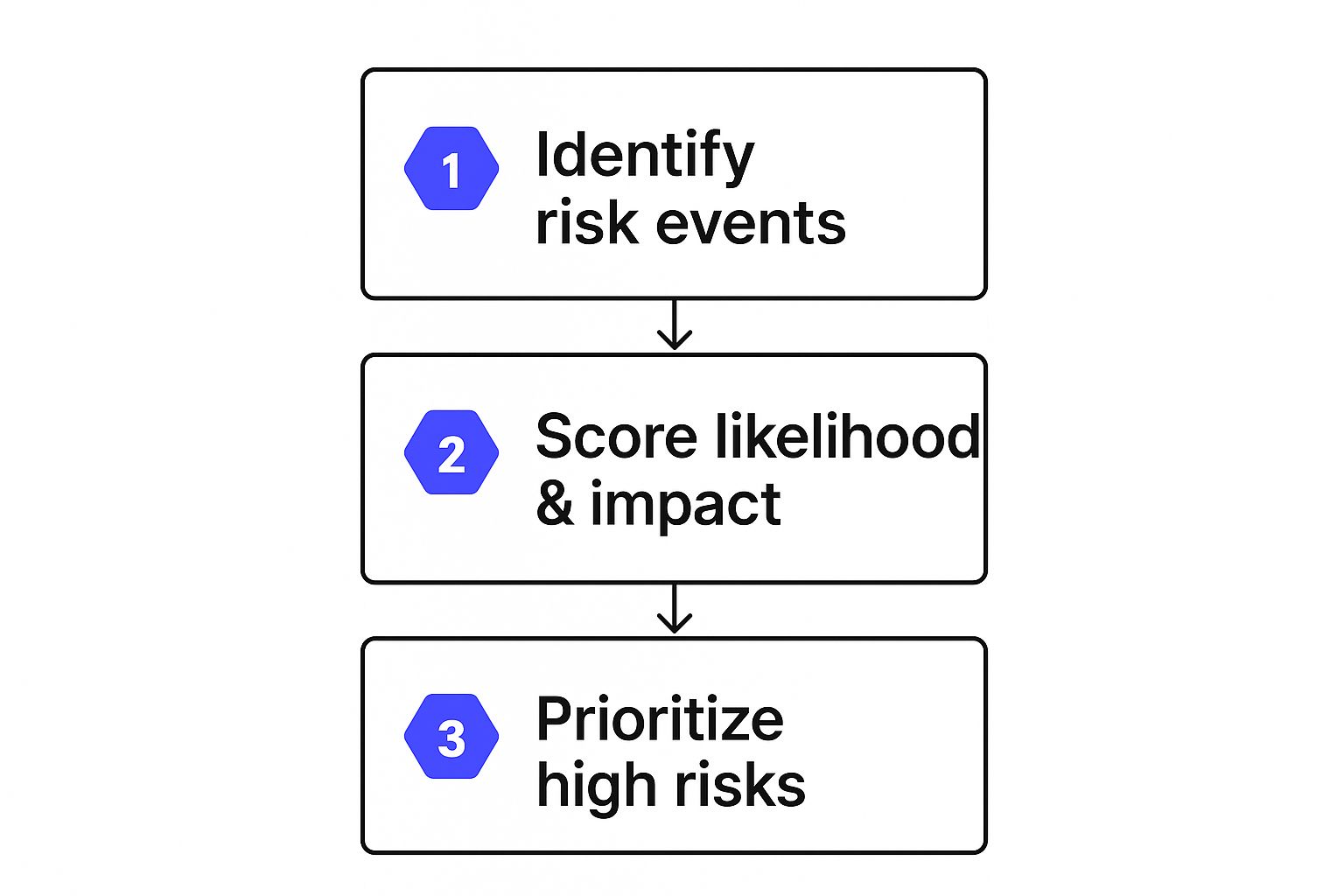Mystery Steps and Email Misfires: Why Your Workflows Aren’t What You Think
Every business leader likes to believe they know exactly how work gets done in their organisation. You might assume all teams are following the same script, from sales and marketing to customer service. Spoiler alert: the reality is often quite different. The simple workflows you started with may have taken on a life of their own. Let’s explore why clearly defined workflows and consistency matter, and why the way you think work gets done might be a far cry from what’s actually happening.
The Great Workflow Assumption
On paper, you probably have processes for everything. Maybe there’s a standard onboarding checklist for new hires, a documented procedure for handling customer queries, or a flowchart for how a sale moves from lead to invoice. It’s comforting to assume everyone follows these processes to the letter. This is the Great Workflow Assumption … the belief that work in your organisation happens exactly as it’s supposed to.
In reality, people are people. Teams under pressure find shortcuts. New employees learn from Sandra down the hall that “actually, we do it this way.” Over time, what’s written in the handbook and what happens on Monday morning can drift apart. It’s nobody’s evil plan, it just happens. Everyone assumes the process is clear, but each person might have their own version of how it’s done. It’s like a company-wide game of whispers: the message (or process) changes a bit with each handoff.
Now, at a small scale, these differences might not be obvious. In a tight-knit 10-person team, you can possibly get away with informal understanding. But when you grow to 25, 50, 100, or more, those little deviations add up. The CEO still thinks “We have a smooth process for X,” while on the ground floor, X is being done five different ways (only one of which matches that neat diagram in the SOP binder). This isn’t about blame, it’s about visibility. You can’t fix what you don’t see, and assumptions can act like blinders.
When Workflows Go Rogue
So what does it look like when the ideal process in your head doesn’t match the messy reality? Here are some relatable examples of workflows going rogue in the wild:
- Duplicate Efforts: Two departments unknowingly enter the same data into two separate systems. Finance painstakingly updates a spreadsheet of sales numbers, not realising Sales has been updating the CRM with the exact same data. Double the work, zero extra value.
- Email Ping-Pong: A customer inquiry email gets forwarded to everyone and their dog because no one’s sure who owns the next step. The thread bounces around for days. By the time someone responds, the customer has given up, or worse, you have two people responding and contradicting each other.
- Mystery Steps: There’s an extra step in a process that everyone follows even though no one remembers why. (“We always wait for the Tuesday report before approving this, it’s just how it’s done.”) If you ask who produces that report and what it’s for, you get blank stares. It might as well be magic.
- Lost in Translation: Marketing hands off a task to Operations, assuming it’ll be done in a day. Operations schedules it for next week because, unbeknownst to Marketing, there’s an approval queue. Both teams are assuming the other knows this, and both are puzzled when nothing happens.
- The Silo Special: Each department has its own version of the process. The sales team thinks Legal is handling the contract after a deal closes. Legal thinks Sales is. Meanwhile, the customer is left waiting because of a classic miscommunication. Oops.
Sound familiar? These little workflow mishaps happen everywhere. Individually, they might just cause a laugh or a minor irritation (“Oh, Alex already did that? Whoops!”). But collectively, they point to a deeper issue: fragmented, inconsistent processes. In other words, what you think is a well-oiled machine might actually be a bunch of mismatched cogs spinning in different directions.
When workflows go off-script like this, each extra handoff or unclear step is a chance for something to go wrong, an error, a delay, or just wasted effort. It’s like a relay race where runners keep dropping the baton because no one quite knows where the next hand-off point is. Entertaining to watch, perhaps, but not great if you’re trying to win the race (or run a successful business!).
The Real Cost of Chaos
It’s easy to shrug off a bit of process chaos as the price of doing business. However, those duplicate tasks, email misfires and mystery steps have real consequences. Small inefficiencies multiply over time, slowing your teams down and creating confusion that can spread across the organisation.
Think about the minutes (or hours) lost each day to chasing information, clarifying misunderstandings, or doing something twice. It all adds up. In fact, knowledge workers admit to wasting over 5 hours a week just waiting for colleagues to provide info, or recreating work because they couldn’t get it. One estimate even pegs 20–30% of a business’s revenue is lost to these kinds of inefficient processes. That’s right … potentially a third of your organisation’s output effectively vanishes due to workflow hiccups. Ouch.
Beyond the hard numbers, there’s the human cost. Consistently messy processes drive employees up the wall. Talented people don’t enjoy wading through unnecessary admin or firefighting basic communication mix-ups. Morale can take a hit when every day is an obstacle course of avoidable hassles. New hires get confused because the “official” process they learned doesn’t match what people actually do. Teams start to get a bit cynical: “This is just how things are around here … chaotic.” It’s not exactly the culture you dreamed of, is it?
And then there’s scaling. Trying to scale a business on top of inconsistent processes is like trying to build a tower on jelly. If your way of working is ad-hoc or dependent on who remembers what, adding more people or more customers can turn cracks into chasms. You might manage with 50 employees muddling through, but at 150, that approach could buckle. Inconsistent service delivery leads to customer complaints. Inability to delegate (because processes only live in one veteran employee’s brain) means you hit a growth ceiling. In short, operational inconsistency is the enemy of scaling confidently.
Mapping: A Reality Check for Your Workflows
So, how do you go from assuming to actually knowing how work gets done in your business? The answer is to shine a light on those hidden, fragmented processes. This is where mapping comes in. Mapping means taking an outside, objective look at your operations, following the trail of tasks and handoffs across teams to see the real picture.
Think of it as a workflow reality check. An outside party (like our team at Yopla) comes in and essentially acts like a business process detective. We interview team members, observe how tasks move from one person to the next, and dig up those “unwritten rules” and workarounds everyone’s been relying on. The goal is to visualise what’s actually happening day to day. That might mean drawing a literal map (diagram) of a process: from the moment a customer raises a hand, to the point they get what they need, who touches the work and when, what tools are used, where information flows (or doesn’t).
The findings can be enlightening. Often, leadership expects to see a nice, straight line of steps A → B → C. Instead, the map comes back looking more like spaghetti: A → B → X → C → B again → D → ??? → Z. But here’s the thing, this isn’t about embarrassing anyone or highlighting faults. It’s about clarity. By getting everything out in the open, you can have those “Ah-ha!” moments: “So THAT’s why the onboarding process always takes forever!” or “No wonder we keep replying twice to the same customer, look at where the communication broke down.”
Mapping gives you a factual, shared view of your operations. It replaces assumption with evidence. Instead of guessing where things might be slowing down or who is doing duplicate work, you have it laid out in front of you. It’s the first step to fixing the issues because you can’t improve what you don’t understand. As the saying goes, “If you want to get somewhere, you need a map.” In this case, you need a map of your own business – warts and all.
From Chaos to Consistency: What You Gain
Uncovering the real workflows in your organisation isn’t just an academic exercise, it’s the starting point for tangible improvements. Once you see the inefficiencies and gaps, you can start closing them. Here are some big wins that come from mapping your processes and tidying them up:
| Workflow Win |
Deep-dive Resource |
| Spot inefficiencies and duplicate effort |
The Hidden Power of Understanding Workflows |
| Measure and track process ROI |
How to Measure Digital Transformation |
| Align teams on one version of the truth |
Meet Your New Worst Enemy – Digital Sprawl |
| Scale confidently without chaos |
The Return on Investment from Digital Transformation |
- Spot inefficiencies: Immediately identify bottlenecks, redundant steps, or tasks being done manually that could be streamlined. (Why are we entering that data twice? Let’s fix that!)
- Improve consistency: Get everyone on the same page with best practices. When every team follows a unified process, you deliver a more reliable experience both internally and to customers. No more five versions of the “right” way floating around.
- Automate repetitive tasks: Find the tasks that make your team members internally sigh “not this again” and see if technology can take over. Automation is a lot easier once you’ve mapped out what’s happening. Free your folks from copy-pasting mania and let them focus on more valuable work.
- Build better customer experiences: When your internal house is in order, it shows on the outside. Fewer balls get dropped. Customers get quicker, more accurate responses because your team isn’t scrambling behind the scenes. A smooth backend process means a smoother front-end experience.
- Scale more confidently: Perhaps most importantly, you gain a solid foundation to grow on. Clear, documented workflows mean you can onboard new staff faster (they can actually read how things work), delegate tasks without worry, and handle higher volumes without things breaking. It’s like turning a rickety footpath into a paved road – much easier to add more traffic.
By mapping and then improving your processes, you turn the chaos into consistency. Teams know what to expect from each other. Work moves faster and with less fuss. You create a culture that values clarity and continuous improvement, rather than one that shrugs and says “that’s just how we do things.” It’s not about making everything rigid, it’s about creating smart guidelines so that everyone can do their best work without tripping over hidden obstacles.
A Friendly Nudge
If you’ve been reading this with a growing sense of “Oh dear, this is us,” don’t worry, you’re definitely not alone, and it’s never too late to straighten things out. The first step is simply recognising the gap between assumed workflows and real ones. The next step? Consider bringing in a fresh perspective to help map out the madness. Sometimes an outside pair of eyes can spot things insiders overlook.
This is exactly what we love doing at Yopla … acting as that friendly detective to help untangle your processes and get your organisation running like the well-oiled machine you thought you already had. No hard sell here, just a genuine offer – if any of the above rings true and you’re curious about uncovering what’s really going on under the hood, we’re here to chat. After all, every great journey starts with a good map, and we’d be delighted to help you draw yours. Here’s to smoother workflows and confident scaling!










